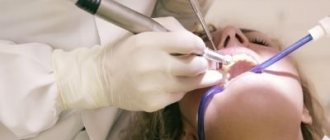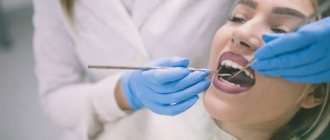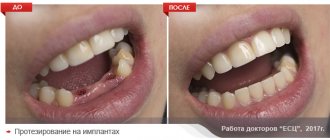In the first days of life, a baby's skin may become covered with small pimples of different appearance, color and location. In order not to worry and wonder why you suddenly encountered this scourge, it is better to immediately familiarize yourself with the most common causes of its occurrence and, depending on what exactly the problem in your case entailed, decide on treatment. Not all pimples in children need it; many go away on their own.
What is newborn acne and what causes it?
Between two and five weeks of age, small pimples may appear on your baby's face (usually on the cheeks, nose, eyelids, chin and/or forehead). According to statistics, acne of newborns (or infant acne, neonatal pustulosis) occurs in 30% of babies. Experts do not agree on why acne occurs, but it may be due to one of the following reasons:
- inflammation of the skin caused by fungi of the genus Melassezia, which are part of the normal human microflora and colonize the skin in the first weeks after birth
- overactive sebaceous glands on the baby’s skin, caused by the specific action of maternal hormones (androgens)
Pimples on a newborn's face have nothing in common with acne in teenagers.
Eye diseases in humans: list, symptoms
The reason for this is many factors. For example, the rapid development of computer technology and the deterioration of the environmental situation every year. Next, we will consider the most common diseases, and also highlight their characteristic symptoms.
Pathology of the optic nerve
Glaucoma
- a chronic disease. Due to increased pressure inside the eyes, optic nerve dysfunction occurs. As a result, vision decreases, which may disappear in the future. The disease progresses very quickly, so the patient risks completely losing his vision if he delays going to the doctor. Signs: impaired lateral vision, black spots, “hazy” images, inability to distinguish objects in the dark, colored rings appear in bright light.
Ischemic optic neuropathy
– circulatory disorders in the intraocular or intraorbital region. Symptoms: decreased visual acuity, appearance of “blind” spots in some areas. Reducing viewing angle.
Ischemic neuropathy
Neuritis
- infection. An inflammatory process in the optic nerve is characteristic. Signs: loss of sensitivity in the area around the eye, pain, weakening of the muscles associated with the optic nerve.
Nerve atrophy
– a disease characterized by dysfunction of arousal conduction. Color perception and viewing angle are impaired. Vision decreases and a person can become completely blind.
Nerve atrophy
Pathology of the eye orbit, eyelids, lacrimal canals
Blepharitis
- inflammation that occurs along the edges of the eyelids. Symptoms: swelling of the tissue, accompanied by burning and redness. The patient feels as if a speck has gotten into his or her eye. There is itching and characteristic discharge. Bright light is difficult to perceive, tearing, pain. Dry eyes and peeling of the eyelid margins may occur. After sleep, purulent scabs form on the eyelashes.
Blepharitis
Cryptophthalmos
- a common disease in which the edges of the eyelids fuse together. This causes the palpebral fissure to narrow or even disappear.
Lagophthalmos
– a pathology characterized by a violation of the closure of the upper and lower eyelids. As a result, some areas remain open all the time, including during bedtime.
Turn of the century
– the place where eyelashes grow is turned towards the eye socket. This creates severe discomfort due to rubbing and irritation of the eyeball. Small ulcers may form on the cornea.
Turn of the century
Coloboma of the century
- disturbance in the structure of the eyelids. Usually occurs along with other morphological defects. For example, cleft palate or cleft lip.
Swelling of the eyelid
– localized accumulation of excess fluid in the tissues around the eyelid. Symptoms: local redness of the skin, discomfort. Eye pain worsens when touched.
Swelling of the eyelid
Blepharospasm
- looks like a convulsive contraction of the facial muscles, as if the person is quickly squinting his eyes. Not controlled by the will of the patient.
Ptosis
– drooping of the upper eyelid. Pathology is classified into several subtypes. In some cases, the eyelid droops so much that it completely covers the eyeball.
Ptosis
Barley
– an infectious disease of an inflammatory nature that occurs with pus discharge. Signs: swelling of the edges of the eyelids, redness and peeling. Pressing is accompanied by severe pain. Discomfort (feeling of a foreign object in the eye) and lacrimation are common. The acute form is characterized by signs of intoxication - loss of strength, fever, headache.
Barley
Trichiasis
– improper eyelash growth. The danger is that pathogens can easily enter the eyes. This provokes inflammation, conjunctivitis and other problems.
Dacryocystitis
– an infection of the tear duct that causes inflammation. There are several types of pathology: acute, chronic, acquired, congenital. Symptoms: painful sensations, the lacrimal sac is red and swollen, suppuration of the canals and constant tearing.
Dacryocystitis
Pathology of the tear-producing system
Dacryodenitis
- damage to the lacrimal glands. It occurs due to chronic pathologies, or due to infection entering the body. If there is a disruption in the functioning of the circulatory system, the disease can take a chronic form. Symptoms: the upper eyelid becomes red and swollen. In some cases, the apple of the eye protrudes. If dacryodenitis is not treated, the inflammation spreads, ulcers form, a high temperature rises, and general malaise appears.
Dacryoadenitis
Lacrimal gland cancer
– develops as a result of abnormal activity of gland cells. Tumors can be either benign or malignant. The second group includes, for example, sarcoma. Signs: pain in the eyes and head. Associated with an increase in formation that puts pressure on the nervous tissue. In some cases, the pressure is so strong that it causes delocalization of the eyeball, making it difficult for them to move. Additional symptoms include swelling and loss of vision.
Pathology of the connective membrane of the eye
Xerophthalmia
– an eye disease during which tears are produced less than normal. There are several reasons for this: chronic inflammatory processes, various injuries, tumors, long-term use of medications. Elderly people are at risk.
Conjunctivitis
- inflammation that occurs in the conjunctival mucosa. It can be allergic, infectious and fungal. All of these varieties are contagious. Infection occurs both through physical contact and through everyday objects.
Tumors of the conjunctiva
– appearing in the coal on the inner side of the mucosa (pterygium) and forming in the area of the connection with the cornea (pinguecula).
Lens pathology
Cataract
– gradual clouding of the eye lens. The disease develops very quickly. It can affect one eye or both. In this case, either the entire lens or one part is damaged. The main category of patients is elderly people. It is this disease that can reduce vision in a very short time, even to the point of blindness. In young people, cataracts are possible due to injuries or somatic diseases. Symptoms: rapid loss of vision (this forces you to change lenses very often), inability to distinguish objects in the dark (“night blindness”), impaired color perception, eyes get tired quickly, and in rare cases, double vision.
Cataract
Lens abnormalities
– cataracts, bifaf, spherophakia, lens luxation, coloboma developing from birth.
Retinal pathology
Retinitis (retinal pigmentary dystrophy)
– a disease manifested by the occurrence of inflammation in various parts of the retina. The causes include injury to the organs of vision and prolonged exposure to sunlight. Symptoms: the normal field of vision narrows, visibility decreases, the image doubles, insufficient visibility at dusk, characteristic colored spots appear before the eyes.
Retinal detachment
– a pathology in which destruction of the retina is observed. Its inner layers begin to peel away from nearby epithelial tissues and blood vessels. In most cases it is treated surgically. Lack of treatment results in vision loss. Signs: “fog” before the eyes, distortion of the geometric shape of objects, sometimes flashes of light and bright sparks flash through.
Retinal detachment
Retinal angiopathy
– destruction of the structure of the choroid in the eyes. This disease is caused by physical trauma, high intraocular pressure, disturbances in the functioning of the central nervous system, diseases of the circulatory system (arterial hypertension), poisoning, and pathological defects in the morphology of blood vessels. Symptoms: noticeable decline in vision, blurred vision, foreign flickers, image distortion. In the most severe cases, vision loss occurs.
Retinal dystrophy
– an extremely dangerous disease that can have a wide variety of causes. The tissue of the retina of the eye dies or decreases. This can happen if qualified assistance from specialists is not provided in a timely manner.
Corneal pathology
Keratitis
– an inflammatory process that affects the cornea of the eye. As a result, clouding of the cornea and the occurrence of infiltrates. The cause may be an infection: viral, bacterial. Injuries can also trigger the development of the disease. Symptoms: lacrimation, redness of the mucous membrane of the eye, atypical sensitivity to bright light, the cornea loses its normal properties - shine, smoothness. If treatment is neglected, the infection spreads to other areas of the visual system.
Keratitis
Belmo
– formation of scar tissue on the cornea of the eye, its persistent clouding. The cause is prolonged inflammatory processes in the body or injury.
Belmo
Corneal astigmatism (keratoconus)
– degeneration of the cornea, which occurs due to increased pressure inside the eye. This leads to a change in the shape of the cornea of the eye. Symptoms: light fringe around the light bulbs, immediate decrease in vision in one of the eyes, myopia.
Keratoconus
Change in eye refraction
Myopia (myopia)
– a refractive error in the eye, in which a person has difficulty seeing distant objects. In case of myopia, the image is fixed in front of the retina. Signs: poor discrimination of distant objects, discomfort, rapid eye fatigue, pressing pain in the temples or forehead.
Myopia
Farsightedness (hypermetropia)
– a refractive error in which the image is read behind the retina, is the opposite of myopia. In this case, the patient has difficulty seeing both near and distant objects. Symptoms: very often there is blurriness before the eyes, sometimes the patient exhibits strabismus.
Farsightedness
Astigmatism
– the disease is characterized by the inability to focus light rays on the retina. Usually appears in people with physiological disorders of the visual organs: cornea, lens. Symptoms: blurred and unclear image, a person gets tired quickly, often complains of a headache; in order to see something, one has to strain the eye muscles.
Astigmatism
Other eye diseases
Nystagmus
– uncontrollable oscillatory movements of the eyeballs.
Lazy eye syndrome or amblyopia
– a pathology in which the eye, due to damage to its muscles, stops working and making movements.
Anisocoria
– difference in pupil size. Basically, it appears with all kinds of eye injuries. Involves acute sensitivity to light and decreased vision. Sometimes this pathology indicates a disruption in the functioning of one of the parts of the brain - the cerebellum.
Anisocoria
Episcleritis
- inflammation that forms in the episcleral tissue. First, redness appears near the cornea, then this area swells. Signs: feeling of discomfort, eyes hurt from bright light. There are discharges from the connective membrane. In most cases, episcleritis goes away on its own.
Episcleritis
Aniridia
– complete absence of the iris of the eye.
Aniridia
Polycoria
– an eye defect when a person has several pupils.
Polycoria
Ophthalmoplegia
– a disease when the nerves of the eye that are responsible for its movement cease to function correctly. This causes paralysis and the inability to rotate the eyeballs. Symptoms: eyes are turned to the nose, do not change this position.
Exophthalmos
– pathological exit of the eyeball beyond the orbit of the eye, occurs due to swelling of its tissue. In addition to the main symptoms, redness of the eyelids and pain when touching the inflamed area are noted.
Diplopia
– a disorder of the visual system, consisting of constant double vision of visible objects.
How to get rid of acne in newborns
There are no home remedies to get rid of newborn pimples on the face. You need to wait until they disappear on their own. Typically, newborn acne goes away in about three to four months without leaving any traces. Here's how to take care of your baby's delicate skin if he has pimples:
- Wash him every day with warm water and mild baby soap, then pat dry.
- Try to avoid any rubbing of the affected areas of the skin, as this can make the process worse or even lead to infection.
- Do not apply lotions or oils to your baby's face.
- There is no need to follow a diet, since neonatal acne has nothing to do with the mother’s diet
Pyoderma in a child
If you take your baby's hygiene seriously, you can prevent many health problems. This also applies to skin pathologies - dermatitis, which has numerous varieties. The most common form of dermatitis in childhood (especially in the first months of life) is pyoderma.
Pyoderma is a purulent skin disease, which is a group of pathologies that develop against the background of penetration of pyogenic microorganisms into the skin. Parents should take into account the ways of transmission of pyoderma: germs are transmitted when the child comes into contact with sick people or a contaminated object.
The disease is most often diagnosed in childhood and has many types. There is an opinion that the cause of pyoderma lies in poor diet and poor hygiene. Although this is not entirely true. This skin pathology develops under the influence of various pathogens: streptococci, staphylococci, pneumococci, Pseudomonas aeruginosa, E. coli, etc.
Often the human body is the habitat of certain microorganisms, which are activated when protective functions are reduced, which leads to the appearance of their pathogenic qualities.
Since the protective function of newborns and infants is more weakened, pyoderma in such patients occurs in a severe form. This happens if treatment is not started in a timely manner and the baby is not properly cared for. In the body of children under 2 months of age, there is no independent production of antibodies. As a result, it is important to care for the baby’s skin throughout the body.
When to see a doctor
If you are concerned about your baby's complexion or if you are concerned that the condition is not improving after three to four months, consult your pediatrician. Your doctor may prescribe a special cream to treat acne in a newborn. Do not use over-the-counter creams or any other medications for acne without first consulting your pediatrician as they may harm your baby. Contact your pediatrician if your newborn has any of these symptoms:
- blisters on the skin
- peeling skin
- heat
- uncharacteristic tearfulness
- poor appetite











